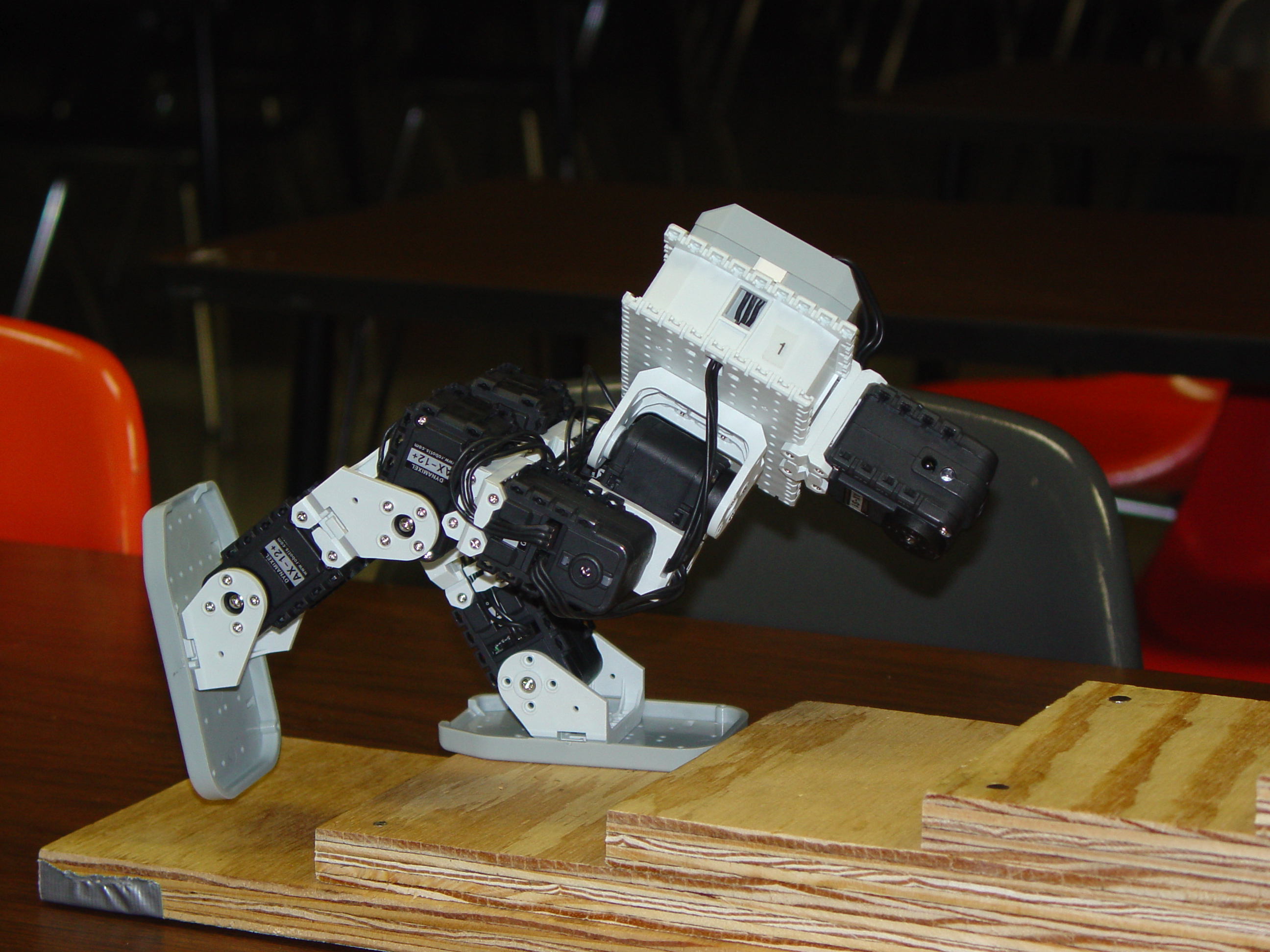[Chi Thai] From spectroscopy and 3-D imaging technologies to robotics,…
페이지 정보
작성일2012/09/06 16:31 Hit10,015Hi Prof. Chi.
Please tell us a little bit about yourself and your background.

I am currently an Associate Professor at the University of Georgia, College of Engineering. I obtained a B.S. Mech. Eng. and a M.S. Aero. Eng. at Northrop University, and a Ph.D. in Agricultural Engineering at U.C. Davis. My main research areas revolved around using near-infrared spectroscopy and 3-D imaging technologies to scan horticultural plants for measuring their overall health and also horticultural products for their quality characteristics.
How did you end up working in the field of robotics?
I am a rather latecomer to Robotics, only since 2007, when two events were pivotal in my decision to shift to Robotics: a) seeing the “Bioloid
Comprehensive” kit in action at the ISTE 2007 conference, and then b) attended RoboCup at GA Tech later that summer.
Everyone seems to have a different meaning for robotics. How would you define robotics?
A robot is a mecha-electronics system whereas hardware and software are integrated to achieve some stated tasks, usually repetitive or potentially harmful to humans.
So, what have you been up to since 2007?
Since 2008, I am involved in two UGA-Duke TIP (Talent Identification Program - https://tip.duke.edu/) programs: “Academic Adventures” (AA) and “Scholar Weekends” (SW). The Duke TIP students can be considered as the top 5% in the USA (one thing for sure is that they are a lots smarter than me when I was at their age) and these 2 programs are designed as “1-day” (AA) or “2-days” (SW) short courses in robotics tailored to these students. I have trained so far about 104 students via the AA program and about 77 students in the SW program:(http://clubs.engr.uga.edu/robotics/DukeTIP/).
From an instructor point of view, as these students are fairly young, I tried to stay away from abstract logic in teaching programming and asked them to think of themselves as the robot and to treat their eyes, arm-hands, and legs as sensors and actuators. I would then ask them about how they would solve a certain problem being assigned to the real bot, and usually they can find some way(s) to solve it with their “own” body. Here, the challenge is to ask them to “slow down” and to guide them about thinking very carefully about what they do (so naturally) with their own body and break it down into little components and pr
teaching.jpgocedures that can be implemented on the robot. Also, surprisingly, I had found that Duke TIP students still had variations in their skills, intellectual capabilities and motivation levels among themselves (just like “regular” students), i.e. that I had to be ready to go one-on-one as needed and re-assign more appropriate difficulty levels when needed. Of course all that raise the instructor’s stress level J (I’ll describe more formal approaches in later sections about the same situation when teaching university students)

Pictures from past Duke TIP OLLO trainings can be found at these web links:
http://www.facebook.com/media/set/?set=a.245231562190490.59868.137563836290597&type=1
http://www.facebook.com/media/set/?set=a.310091945704451.72404.137563836290597&type=1
The SW program is aimed towards 8th-11th graders and uses the Bioloid Kits (CM-5 and CM-510). So far most students taking SW had no or not much experiences in robotics, but I expect this to change in the future as the OLLO graduates get older and enroll in this course. This program also has 2 parts, SW1 and SW2, each part lasting the whole weekend (2 days with about 7-8 hours of instruction/lab time per day), with a time gap about 2 months between each SW. As Bioloid robots can take more times to build, the students work on pre-built robots.
SW1 course is an introduction to Robotics providing students with an overview of the main issues that robotics engineers would encounter in their careers and also showcases selected creative solution approaches and tools used, thus the core instructional materials are designed around 2 robotics projects:
SW2 starts from robotics materials already covered in SW1 and expands them to more advanced concepts.

Pictures taken during the latest SW1 and SW2 training weekends can be seen at:
http://www.facebook.com/media/set/?set=a.247196651996675.55999.138070182909323&type=1
http://www.facebook.com/media/set/?set=a.348633391853000.74001.138070182909323&type=1
What are your hopes for robotics in the future?
As far as my hopes and dreams for robotics progress in the near future, I am fairly certain that:· A windfall of all the current automotive battery research is that we’ll have more powerful and longer lasting power pack for our robots.
· We probably will be able to use ordinary cell phones to control robotics platforms soon.
· I am also looking forward to more powerful GPU (Graphics Processing Unit) to be integrated into future cell phones, as this will allow us to do Heterogeneous Computing approaches that would advance robotic 3-D vision capabilities.
Thank you for your time.
For more information about Prof. Chi Thai, click on the link below :





 DYNAMIXEL
DYNAMIXEL